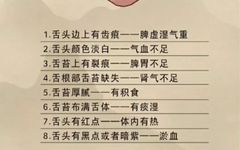Tongue diagnosis in Traditional Chinese Medicine (TCM) is the best interpretation of this principle. Tongue diagnosis mainly involves observing the color and texture of the tongue coating to assess the state of the body’s organs, as well as conditions of cold and heat.
Generally speaking, if the tongue appears relatively white and has some cracks, it indicates that the person’s spleen and stomach are not functioning well. Individuals with spleen and stomach deficiency are more prone to internal heat, which may also be accompanied by dry mouth and bad breath.
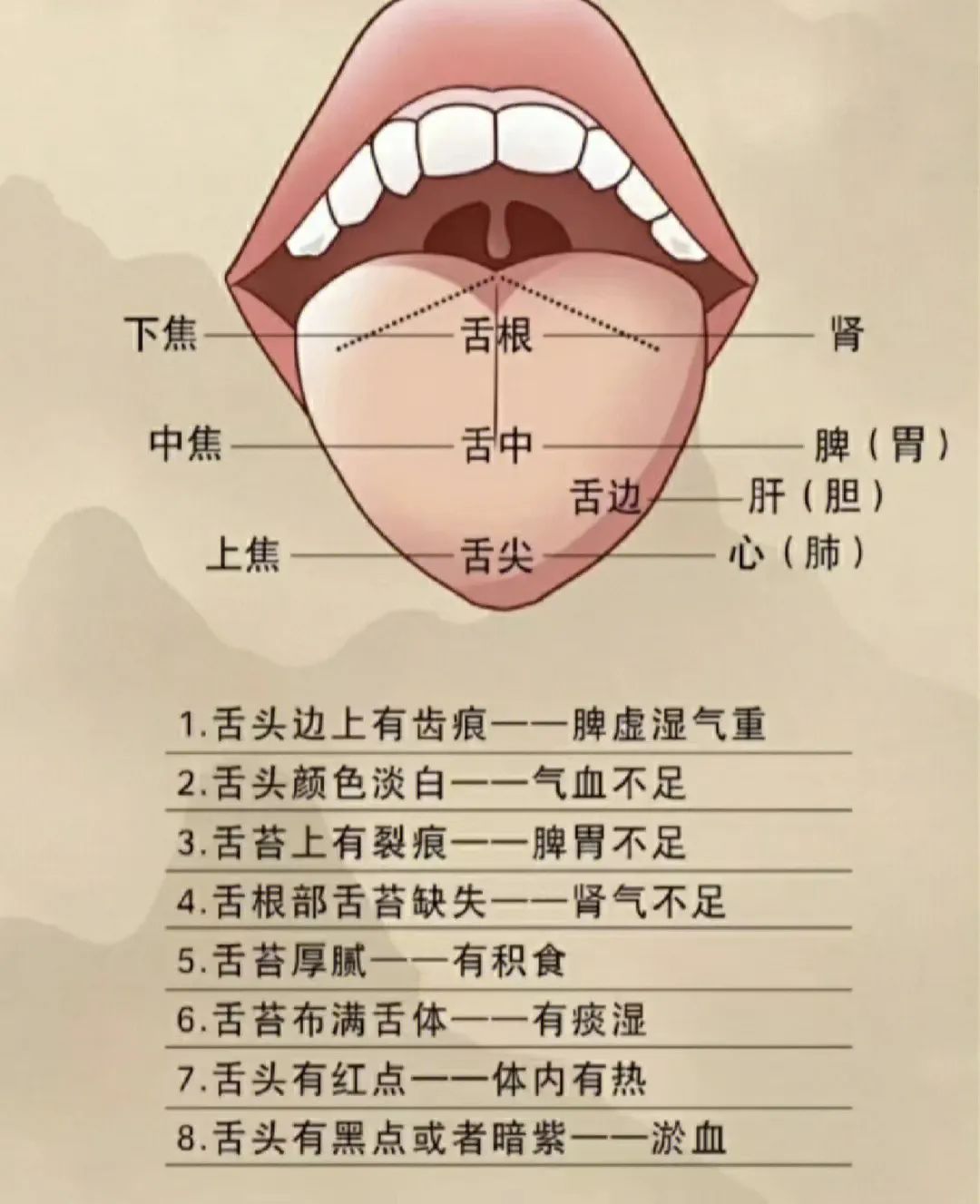
Therefore, if you notice that your tongue coating or texture is different from usual, it is essential to make timely adjustments to avoid worsening the condition.
To use tongue observation for body regulation, one must first learn to understand the correspondence between the tongue and the five internal organs, the underlying reasons for different tongue coatings and textures, and the health issues they represent.
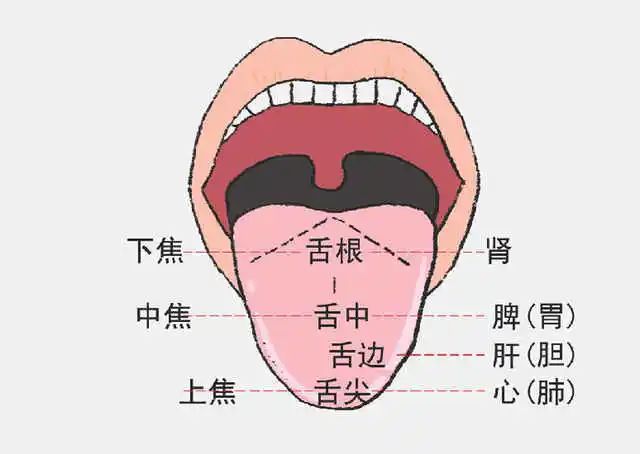
Normal tongue appearance: The tongue body is soft, moves freely, is light red in color, and has a thin, evenly distributed, moderately moist white coating, often described as “light red tongue with thin white coating.”
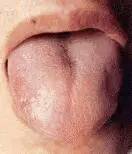
Observing the tongue mainly involves examining changes in the tongue body and coating. The tongue body, also known as the tongue texture, is the muscular and vascular tissue of the tongue. The tongue coating is a layer of substance attached to the tongue body, generated by the stomach qi. The term “stomach qi” refers to the spleen’s ability to transform and transport, with the stomach being responsible for receiving and digesting (indicating normal digestive function). When the spleen and stomach function normally, a thin and moist coating can be observed on the tongue. During pathological changes in the body, the balance of yin and yang, the harmony of qi and blood, and the preservation of body fluids can all be directly reflected in changes in the tongue coating. Observing changes in the tongue coating can reveal the state of the internal organs (organ dysfunction) and the severity of disease (progression of illness).
Cracked tongue
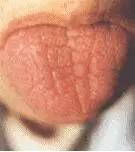
Illustration: A tongue with varying numbers of cracks of different depths and shapes is referred to as a cracked tongue.
Cracked tongue indicates:
(1) Excess heat injuring yin, often seen as red tongue with cracks;
(2) Blood deficiency leading to lack of moisture, often seen as pale white tongue with cracks;
(3) Spleen deficiency with dampness, often presenting as a pale, plump tongue with teeth marks on the edges and cracks. Treatment should focus on nourishing yin essence, tonifying qi, and generating fluids; tonifying the spleen and draining dampness; nourishing yin and clearing heat; and moistening dryness. Additionally, a cracked tongue refers to cracks in the tongue body as well as cracks in the tongue coating; during diagnosis, one should differentiate based on the dryness or moisture of the coating. If the cracks are due to dryness, it indicates an external pathogenic heat injuring body fluids, leading to severe dryness. If the coating has moisture and cracks, it is often due to qi deficiency. Modern research suggests that shallow cracks on the tongue are primarily due to atrophy of the tongue mucosa, causing the longitudinal or transverse grooves to become visible, while deep cracks indicate more severe atrophic changes in the tongue, leading to loss of normal structure in the tongue epithelium, with some papillae flattening and merging, while others atrophy and break, resulting in cracks, with thickened scar tissue visible underneath. According to the “Guide to Tongue Diagnosis: Understanding Tongue Quality,” a normal tongue has no cracks, while cracks indicate blood deficiency, with the number and depth of cracks reflecting the severity of blood deficiency.
—— A tongue with horizontal cracks indicates a deficiency of yin, such as ice crystal patterns, often seen in elderly individuals with yin deficiency;
—— A red tongue with no coating or with horizontal and vertical cracks that are short indicates yin deficiency with fluid depletion;
—— A tongue with cracks resembling a person character or a river character indicates dryness of the stomach and depletion of fluids, leading to internal heat.
—— A red tongue with person character cracks indicates initial invasion of evil into the heart or misapplication of cooling herbs in yin conditions;
—— A red tongue with cracks and significant thirst indicates upper digestive issues;
—— A tongue with thick, greasy red coating and cracks indicates excess heat in the internal organs;
—— A tongue with no coating and cracks indicates yin deficiency with fire;
—— A dry, cracked red tongue indicates evil heat entering the liver or significant damage to body fluids;
—— A tongue with cracks but not smooth indicates insufficient stomach yin, with phlegm-heat accumulation;
—— If the tongue is red with a broken tip and blood spots, it indicates significant depletion of body fluids and intense heart fire;
—— A yellow tongue with tiger stripes indicates both qi and blood deficiency;
—— A red, moist tongue with black stripes indicates cold syndrome due to qi deficiency;
—— A tongue with person character cracks at the back indicates kidney qi affecting the heart;
—— A tongue with stripes indicates deficiency of stomach qi;
—— A pale white tongue with numerous cracks indicates spleen deficiency with dampness, while a red tongue with black stripes and a slippery coating indicates a cold syndrome due to water invading the fire position;
—— A tongue showing blue stripes indicates weak stomach qi in febrile diseases, and in miscellaneous diseases, indicates cold accumulation in the palace;
—— A cracked tongue with bleeding indicates desiccated blood, with bleeding at the tip indicating intense heart fire.
—— Due to the complexity of cracked tongue syndromes, they are relatively rare in clinical diseases. Specific references can be made to various syndromes. Patients with this type of tongue appearance generally have complex conditions, and treatment should be based on syndrome differentiation.

